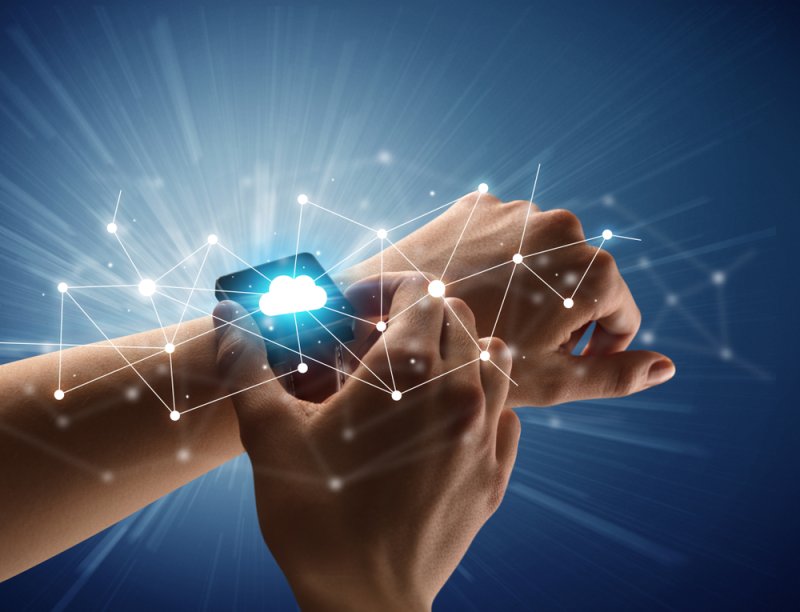The most important feature of a smartwatch is its ability to provide notifications and alerts. These can either be notifications that mirror those on your connected smartphone or notifications designed for the watch.
App availability is also a key factor. The best smartwatches run apps optimized for the device—whether it’s Wear OS, Tizen or iOS.
Table of Contents
Fitness Tracking
As smartwatches continue to evolve from a complementary gadget to true companion devices, fitness tracking features are becoming a major selling point. Many top-tier models feature built in GPS that lets them monitor your location on a map, while others have a pedometer and other fitness tracking sensors. Some even offer a heart rate monitor and can track your sleep and exercise habits.
Regardless of what type of fitness tracking you prefer, most smartwatches will allow you to set workout goals, receive notifications, and track your progress. Most will also provide a summary of your daily activity, with stats like distance walked and hours slept. A number of devices will also let you store and play music from your smartphone, which can be a great way to stay entertained during a workout or run.
Another key consideration for those looking to purchase a smartwatch is battery life. Due to size constraints, smartwatches are often limited in how long they can be used between charges. While many can last a day or more between recharges, it’s best to look for a model with a longer battery life that matches your usage needs.
A number of smartwatches also come with a range of apps designed to work specifically for the platform. For example, if you choose a model with an Android Wear OS, you can download apps that include Evernote, a voice dictation app and Google maps. The latest Apple Watch models, as well as most Samsung models, will also support mobile payments using NFC chips that enable the device to connect to wireless readers without needing a phone nearby.
Depending on the features you choose, your smartwatch can give you alerts when it receives incoming calls, texts, and notifications from other connected devices. Some may even have a dedicated dialer so you can make and answer calls with just a tap. Many smartwatches also have a microphone, so you can use it to dictate text messages or reply to messages in a hands-free manner.
If you’re looking for a more advanced option, consider the addition of an ECG sensor, which performs an electrocardiogram to detect abnormal heart rhythms. While this technology isn’t as accurate as a real doctor’s visit, it can still provide useful insights to help you improve your overall health and wellbeing.
Notifications
As smartwatches become more sophisticated, their capabilities go beyond just telling the time. They can function as fitness trackers that can help you monitor your progress on a hike or jog. They can simplify your smartphone use while tethered to it by displaying notifications like texts or social media posts. They can even help you find your way around with GPS features.
Notifications are easily one of the most important functions a smartwatch offers. Devices that are connected to a phone mirror notifications from the phone, while standalone wearables that have cellular connectivity display notifications specifically designed for the watch. These might include flight alerts, text messages or weather warnings. They can also act as reminders, giving you a quick pop-up of the message without having to unlock the phone and launch an app.
Some smartwatches have built-in microphones and allow users to enter voice commands. This can be useful for the elderly who don’t have great vision or people with poor motor skills. It can also be used for hands-free voice control of music streaming apps, and it is a popular feature on Apple watches with Siri. Some smartwatches, like the Samsung Gear S4 and Google Wear, are experimenting with contextually relevant notifications that only show up when you need them.
Another key feature to consider is whether the smartwatch has a waterproof or water-resistant design. This can be important if you want to use it during a workout, in the shower or while swimming. Many wearables are capable of withstanding a few splashes or puddles, but others can’t.
Some smartwatches come with additional health and wellness tracking features, such as a heart rate sensor, which can be useful for those with a medical condition. Certain models, such as the Apple Watch Series 4 and Fitbit Versa, have FDA-approved ECG and SpO2 sensors, which can detect atrial fibrillation and sleep apnea respectively. These sensors can have a significant impact on battery life.
Calls
Besides the obvious feature of telling time, a smartwatch can help users execute a range of tasks and fulfil their wishes without taking their phone out of their pocket. The most popular models feature a touchscreen that can act as a virtual keyboard, letting you use your watch to read and reply to messages, listen to music and manage calls. Some models also offer cellular connectivity via a small SIM slot for making and receiving phone calls, even when the wearer is not connected to their smartphone.
Some models have a microphone to enable hands-free calls and come with a built-in speaker for audio playback. Some models are capable of using GPS technology to record the location of the wearer’s mobile device, helping them find their way home. The most advanced smartwatches can even monitor the wearer’s heart rate and can be used as a fitness tracker, or to perform basic voice commands for the user’s digital assistant.
A smartwatch can also let the user synchronize their calendar and reminders with their smartphone so that they are always updated. This allows them to receive notifications of events and meetings, remind them to take medicines or turn off their electronic devices, for example. Many models also allow the user to set custom tags and a timer that will alert them when a particular task is due to be completed, such as “turn off the stove at 9:00 PM before sleeping” or “take pills at 8:30 AM for diabetes”.
A number of smartwatches come with a SOS button that allows the wearer to call and share their live location with pre-selected emergency contacts. This is a particularly important feature for senior citizens, as it allows them to remain connected to their loved ones even when they are physically far away from their smartphones. This function can be activated by pressing the button on the back of the device for a few seconds or pressing the home key three times. Some smartwatches can also be configured to only activate this feature when the wearer is wearing the device, or to require a five-second delay before sending.
Music
A smartwatch is more than just a timepiece, with the ability to perform a host of tasks in addition to telling time. Whether you want to track your fitness progress, be alerted to notifications or stream music on the go, a smartwatch will help you accomplish all of these tasks with ease. However, the wide variety of options can be confusing to consumers. To make a wise purchase, you need to consider several factors.
A good starting point is to look for a model that offers features that align with your lifestyle. For example, if you frequently take calls on the go, consider looking for a model with a microphone and speaker for hands-free communication. Likewise, if you frequently work out on the road or at the gym, look for a model that features GPS for tracking your location and receiving geo-specific alerts.
In addition to call and message alerts, smartwatches offer the ability to display calendar appointments and other types of notifications. You should also look for models that offer a selection of apps optimized for the wearables platform, such as those offered by Google’s Wear OS or Apple’s watchOS. Many of these apps allow you to complete specific functions without having to take out your phone, such as scheduling a Lyft ride or responding to text messages by voice.
Another important feature of a smartwatch is its battery life. Since these devices can be worn at home, the office and while out on the road, they must provide a long battery life to support continuous use throughout the day. Manufacturers are working hard to deliver all-day battery life for the most popular models and have been successful in some cases.
One of the most challenging aspects of designing a smartwatch is to create intuitive graphical user interfaces for their small display screens. This has become a major focus of manufacturers as they strive to offer the best features possible within a limited space on a wristwatch. This is particularly challenging given the fact that a typical smartwatch includes sensors, a CPU and a battery, which adds up to a large amount of power.







